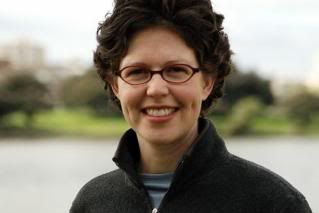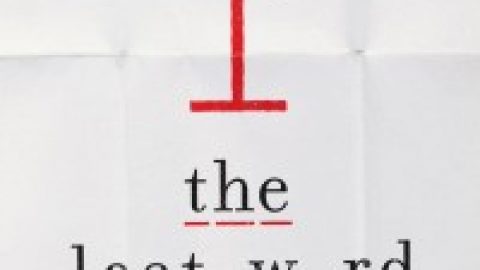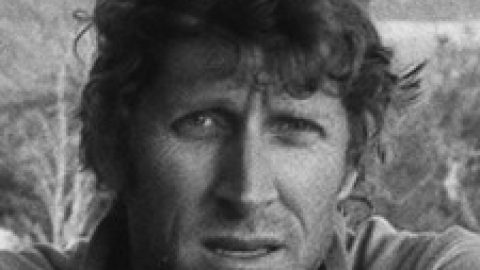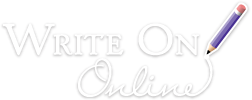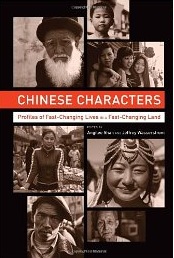 Angilee Shah is co-editor of the anthology Chinese Characters: Profiles of Fast-Changing Lives in a Fast-Changing Land. A freelance journalist, Shah works on projects mostly to do with immigration and globalization, as well as projects on Asia that focus on long-form writing and working with scholars who want to write for a general audience.
Angilee Shah is co-editor of the anthology Chinese Characters: Profiles of Fast-Changing Lives in a Fast-Changing Land. A freelance journalist, Shah works on projects mostly to do with immigration and globalization, as well as projects on Asia that focus on long-form writing and working with scholars who want to write for a general audience.
What inspired you to become a writer?
I guess I’ve always been a writer, or at least intensely interested in stories and choosing words and shaping sentences. I worked on school newspapers and then a magazine in college, and it occurred to me about halfway through my time at UC Berkeley that this might be a career. I had a really great mentor and, after 9/11 especially, it seemed to me that stories are very important. They’re how we get to know each other, they help make us human. And so I took the leap into professional journalism after college and haven’t looked back.
How did the Chinese Characters come about? How did you get involved in the process?
Jeffrey Wasserstrom, an historian at UC Irvine and the co-editor of the book, thought up the collection. He was discussing new writing on China with Peter Hessler and thought, “What if some of these interesting and up-close perspectives were brought together in one place?” Peter was interested in the idea and then Jeff asked me if I was interested in helping to edit the book. Of course, I was. We began finding contributors with great voices and stories to tell, adding to the book until we had the 15 chapters you see.
Why is this an important book? What do you hope people learn from it?
Part of our reasoning in focusing on profiles was that Western readers often have cartoonish understandings of China. We get a lot of news about dissidents and politics, the economy and factories in China. We don’t often see, in English, stories about everyday people. We don’t often get to understand that China is truly diverse. So, in part, we wanted to add something new to people’s understanding of China. Beyond that, I just hope people enjoy reading each chapter. China has changed in such extraordinary ways that people’s lives there are fascinating. And still, they also deal with the mundane problems that we can all relate to: break-ups and arguing with parents and making a living. So I hope readers find themselves immersed in the book and appreciate the way these stories have been deeply reported and crafted.
What was your process for compiling and editing this anthology?
Each chapter was different. Some are adapted from earlier pieces and required very little editing. With some, we started from deep reporting or research and hashed out narratives. We talked the chapters through, working with the authors to choose main characters and craft narratives that had scenes and suspense. We went through many drafts to really get to the heart of each story while being very accurate about what happened. Near the end of this process, when we had chapters finished or close to finished, Jeff and I broke the book into what turned out to be fairly clear thematic sections and wrote short introductions to each, giving the reader a bit of context to understand the chapters together. Jeff wrote an introduction that gives some historical perspective and, near the very end, I wrote an afterword to update readers as best we could on what had happened to the people in the book since the authors wrote their chapters.
What was your favorite part of working on Chinese Characters? The greatest challenge?
My favorite part about editing this collection was how deeply I felt that I began to know the characters in the book. It was when I began to imagine them living their lives in my mind that I knew we were on to something good for readers. They were real people to me and even the news about China, particular when it touched on places in the book, took on new meaning.
The greatest challenge was the breadth of the book. Having this many stories in my head at once, and feeling quite deeply about each of them, was not always easy. But the contributors are really experts and know their material inside out, which made the whole process much easier.
Advice for people who want to contribute to an anthology?
Many writers tackle topics, especially if they’re used to writing for academic journals. But I think the most important thing, in nonfiction particularly, is to have a really well reported and compelling story. That’s what really carries readers through material. They need a reason to stay with the story, to find out how it ends.
Advice for those who want to edit books?
Take a deep breath. I don’t think I realized how large and consuming a project like this could be until I was knee-deep. The other thing I would add—and I think this is something I’ve learned great editors I’ve worked with—is that you have to trust your authors. You have to value their style and knowledge and bring out their best work, instead of using a heavy editing hand that ultimately takes the soul out of a piece of writing.
What do you know now that you wish you knew at the beginning of this project?
This whole thing has been a huge learning experience for me—learning about how publishers operate, how sales and marketing work. I questioned a lot at the beginning, every word choice and structural edit, because I felt so new to the medium. But I think this project took on a lot of life for me when I began to just follow my instincts as an editor and journalist. Also, I wish I realized how an excellent copy editor—we had a great one in Peter Dreyer—can really help a book shine!

